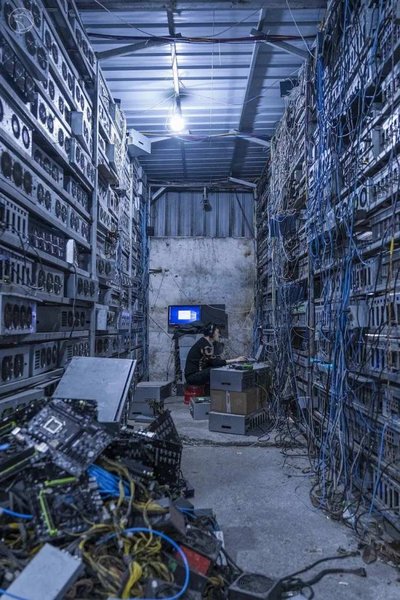Investing in mining equipment in the USA presents a fascinating intersection of technology, finance, and innovation. As cryptocurrencies such as Bitcoin (BTC), Ethereum (ETH), and Dogecoin (DOG) continue to reshape the global financial landscape, demand for efficient mining rigs has never been more pronounced. Mining machines, whether purchased outright or hosted by specialized data centers, offer an opportunity not only to engage with cutting-edge technology but also to potentially harness significant returns in an increasingly competitive market.
Mining equipment, at its core, serves as the technological heart of cryptocurrency generation. These devices—ranging from application-specific integrated circuits (ASICs) focused on Bitcoin mining to general-purpose graphic processing units (GPUs) often used for Ethereum mining—are engineered to perform complex computations that validate transactions on blockchain networks. The efficiency and speed of these mining rigs directly translate to profitability. The mining farm, a collective of such rigs operating in tandem, can dramatically amplify earnings but requires substantial capital investment and technical oversight.
It’s crucial to understand the variables shaping the profitability of mining machines within the US context. Electricity costs, cooling solutions, hardware depreciation, and fluctuating cryptocurrency prices all play pivotal roles. Hosting services, where mining rigs are maintained off-site in specialized facilities, have emerged as a compelling solution. They alleviate operational burdens by providing optimal environmental controls, power management, and sometimes even hardware leasing options. For investors, hosting can turn mining farms into relatively hands-off ventures without sacrificing potential returns.

Bitcoin remains the flagship cryptocurrency driving demand for ASIC mining machines. Given its Proof-of-Work consensus mechanism, Bitcoin mining requires immense computational power. The USA’s increasing focus on renewable energy sources makes it an attractive location for mining farms looking to reduce carbon footprints and managing costs efficiently. Additionally, the rising interest from institutional investors and regulatory clarity in certain states provide a growing ecosystem for mining ventures. However, volatility in BTC prices can introduce risk, necessitating a strategic approach to both hardware acquisition and mining operations.
On the flip side, Ethereum’s transition to Proof-of-Stake might shift the landscape for ETH mining dramatically. Yet, before and even after Ethereum’s network upgrades, many miners rely on GPU rigs, which can be versatile enough to mine other altcoins or be repurposed for hosting or computational tasks. This versatility underscores the importance of understanding the lifecycle and adaptability of mining rigs and machines, particularly in environments dominated by rapid technological shifts.
The enthusiasm surrounding altcoins, especially Dogecoin, has also revitalized interest in smaller-scale mining operations. While Dogecoin itself can be mined via GPU rigs, it depends heavily on the merge-mining process with Litecoin, adding a layer of complexity for miners considering diversification. For investors, this presents a nuanced landscape: balancing the potential short-term gains from altcoins against the long-term stability of established giants like BTC and ETH is paramount.
Mining farm operators in the USA have continuously innovated to capitalize on this dynamic market. By strategically locating facilities near low-cost energy supplies or industrial hubs, they optimize operational expenses. Moreover, the advent of AI-powered monitoring and automation in mining rigs brings efficiency like never before, enabling real-time adjustment of parameters to maximize hash rates and minimize energy consumption. This tech-symphony orchestrated within mining farms ensures sustained profitability in fluctuating market conditions.

Investing in mining equipment also requires attention to hardware suppliers and secondary markets. The semiconductor supply chain intricacies influence the availability and pricing of ASIC miners and GPUs. Buyers must navigate between brand reputations, warranty conditions, and emerging technologies. Second-hand rigs, although cost-effective, bring risks related to wear and diminished efficiency. Conversely, new-generation machines offer improved energy efficiency, vital for those aiming to maximize margins given the competitive mining difficulty and market unpredictability.
What about exchanges and liquidity? Mining operations cannot exist in isolation. Successful extraction of Bitcoin or Ethereum needs swift, cost-effective conversion to fiat currency or alternative cryptos. The presence of robust cryptocurrency exchanges in the USA and beyond ensures miners can liquidate rewards or hedge price exposure effectively. Integration between mining operations and exchanges also drives innovation in financial products, like futures and options, allowing miners to manage risk in volatile markets.
Finally, from a regulatory standpoint, mining investments in the USA are subject to state-by-state variations. While some regions endorse crypto mining with incentives, others impose restrictions primarily due to environmental concerns. Prospective investors must perform diligent due diligence, factoring in not only market trends but also the evolving legal and environmental frameworks. This layered complexity makes mining equipment investment not just a technological decision but a strategic one, blending finance, law, and innovation.
In conclusion, investing in mining equipment in the USA embodies a golden opportunity layered with challenges and potential rewards. From the intricacies of hardware choices—whether ASICs for Bitcoin, GPUs for Ethereum, or flexible rigs for altcoins—to the strategic use of hosting services and mining farms, the sector is vibrant and dynamic. The close interplay with cryptocurrency prices, exchange platforms, and regulatory landscapes demands a multidimensional understanding. For forward-thinking investors, mining could indeed be a gateway to the future financial frontier.